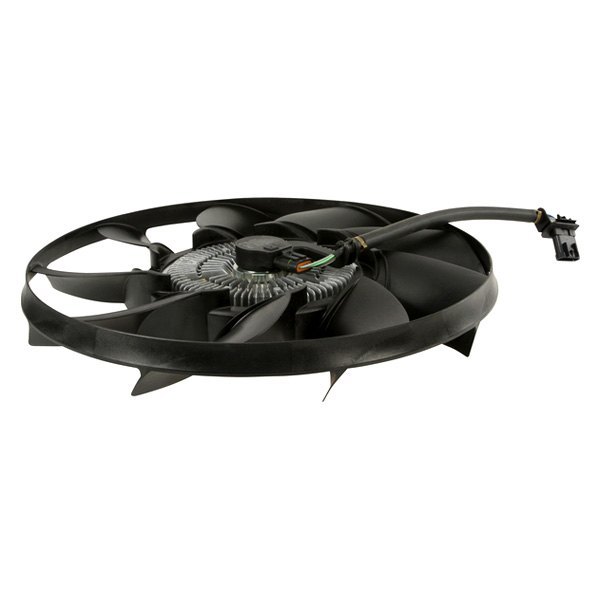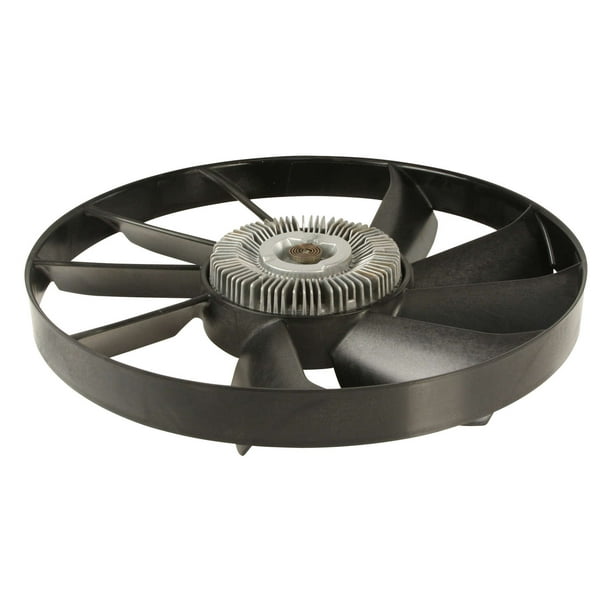The 7-Minute Rule for Fan Blades
Table of ContentsThe Of Fan BladesGetting My Fan Blades To WorkHow Fan Blades can Save You Time, Stress, and Money.Facts About Fan Blades Uncovered
CLA-2-84: RR: NC:4:102 A84377 Mr. Walter R. MannsFord Motor CompanyWest Park CenterP.O. Box 6094Dearborn, Michigan 48121RE: The tariff category of fan clutch drives from either Canada or GermanyDear Mr. Manns: In your letter dated Might 24, 1996 you requested a tariff category ruling. The products at concern are a series of viscous clutch fan drives imported for usage with automobile cooling fans.
This thick fluid allows torque to be sent from the engine disk to the fan disk, consequently driving the attached fan blade. Design number 712 (Visctronic) functions rather in a different way in that it is an electronically controlled, variable speed viscous drive. Rather of counting on direct temperature level response of the thermostatic coil, the valve is regulated by the engine management control system.
The applicable subheading for the fan clutch drives will be 8483. 60.4000, Harmonized Tariff Arrange of the United States (HTS), which offers for clutches. The rate of task will be 4. 5 percent advertisement valorem. Due to the fact that these clutch systems are thought about to be functional parts of the vehicle engine, the exclusionary language governing heading 8483 would not be relevant.


Facts About Fan Blades Revealed
Whether you tow or not, this fan clutch is an excellent addition to any 6. 5 for enhanced cooling/reliability. See the article here: http://www. 62-65-dieselpage. com/reviews/fanclutch. htm Based on my own individual experience with my 1996 GMC, and the reports from lots of others, the factory fan clutch calibration is much too high for proper engine cooling.
This coil temp, while straight associated to engine coolant temp, is a much lower worth. fan blades. In many cases, it takes well over 220 coolant temperature through the radiator to achieve this point. In reality, the "kill temp" or the defined max engine coolant temp measured at the thermostat outlet is defined at 240.
The rapid swing from 220+ down to 180 can be Visit Your URL really hard on the cylinder heads and gaskets and so on. The modified calibration moves the engagement pointdownward by 15f. This down slide moves the entire fan engagement curve lower, keeping the engine coolant temperature far more steady. By starting the engagement curve previously, we also enhance cooling, transmission fluid, and engine oil cooling Most of the times, with this modified curve, total clutch engagement is not even needed.
The engagement curve is what is key, and this is only regularly repeatable through factory calibration when the units are constructed. The bimetal springs are the very same, and no lower temperature springs are readily available. The clutches are built with a modification in the distance of the spring and valve to the internal fluid port so that by 180 the port is open to get full engagement.
The clutch for every single provided condition will just pull a specific amount of torque. We will use 30 lb/ft as an example at full engagement. Given the 30 lb/ft Resources ranking, the addition of a bigger blade will NOT pull anymore air UNLESS the larger blade is more effective, easy physics.
What Does Fan Blades Do?
25x 2500 engine RPM) 20" blade RPM 2900 @ 30 lb/ft21" blade RPM 2750 @ 30 lb/ftBoth blades will be pulling comparable, if not identical CFM rankings, BUT, the 21 blade will be producing increased slip speed triggering higher tension on the clutch. These will be readily available for serpentine belt, reverse rotation only.
2l and 6. 5L models in the new body design from 1988 on. If you have a screw on clutch center with integral pulley, you will need to change to the 98 water pump/pulley, or wait to see if demand is enough to make a production run of this part too.
I recommend the High Capacity Cooling modifications initially to guarantee appropriate coolant flow and to reduce the stagnant flow areas reducing the instances of head cracks, and localized locations in the engine. Pre 1997 models used a 6 blade 20" steel fan with a large pilot and 6 installing bolts.
The new clutches will be of the 1997 and Your Domain Name later design so if you do not have a little pilot, 4 bolt, 9 blade fan, you will require one. I also have these readily available. Either 20" steel vs. 21" plastic blade will work fine. The clutch has been designed/tested with the 20 steel blade which will fit with absolute certainty and no clearance concerns.
This blade has actually NOT been tested with this clutch calibration. I personally choose the 20 steel blade for the direct fit and the stiff building. It simply plain moves air where the plastic unit can flex especially when warm. Personally, I prefer 195 thermostats. This is based upon my observations that this temperature variety produces optimal effectiveness and power.
The smart Trick of Fan Blades That Nobody is Talking About
It has been said that the 195 thermostat is not totally open until roughly 220f BUT with double thermostats, the circulation even partially open is quite considerable, and in all however the most extreme cases plenty sufficient. The option is yours, I offer both temp rankings for the double thermostat setup.
When you think about an automobile cooling system, the first thing that likely enters your mind is your radiatoror perhaps your cooling fan. The oft-overlooked does not get a lots of credit or attention, but it's an important piece of the cooling formula in numerous vehicles (fan blades). It assists your cooling system operate effectively and your engine run effectively.